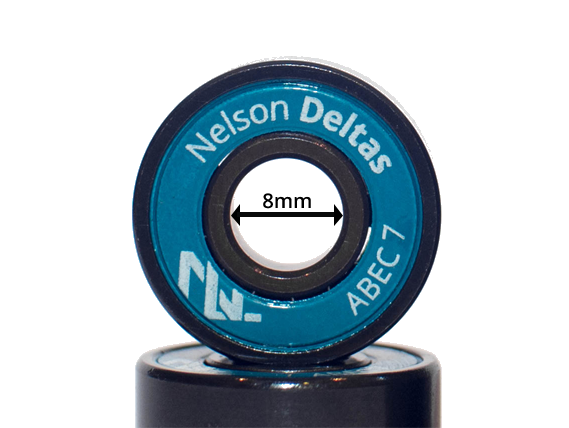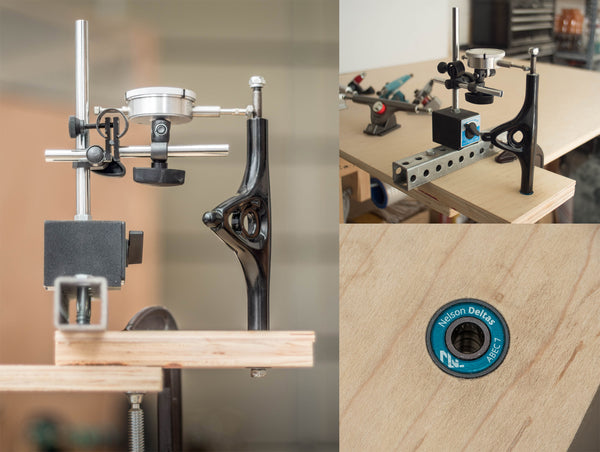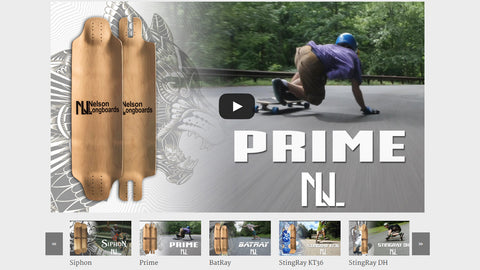How Precise Are Your Cast Trucks?
The Longboard Truck Showdown Part 1
February 12, 2015
We measured 6 of the most popular brands on the market, to find out which trucks were the most precise.
Who hasn't spent time trying to find the perfect truck for their next setup? With companies claiming their trucks are more precise or your buddy telling you all cast hangers come pre-bent, it's hard to separate fact from fiction. We decided to get to the bottom of it all, with dozens of fresh trucks at our fingertips and precise measuring equipment, we're going to find out what the numbers say.

After taking hundreds of measurements we got some surprising results.
Why is precision important?
It goes without saying that trucks are a crucial part of your ride. Skateboarding wouldn't exist if it wasn't for surfers prying trucks off roller skates back in the days of the Z-Boys. Luckily things have come a long way since then.
At first glance most trucks on the market look similar, but the devil is in the details.
A Precise Trucks Leads To
- Smoother slides - A true 8mm axle eliminates play between the bearings and axle
- More evenly worn wheels - No play between the axle and wheels keeps them wearing evenly
- Extra grip - Keeping the wheel from tilting side to side results for maximum surface contact with the ground
- More stability at speed - Less slop between the hanger and baseplate = more stability
It almost sounds to good to be true which is why riders won't hesitate to drop hundreds of dollars on CNC machined trucks.
So do you really need to throw down $400 to take your setup to the next level?
Not necessarily
Recently companies have been bringing features like support pins and ball pivots into the world of affordable cast trucks. But there's more to truck performance than a long feature list, accurate dimensions and precise tolerances are the difference between your setup feeling sloppy or solid.

Atlas, Caliber I & II, Charger II, Gunmetal, Paris V2, Ronin Trucks, and forged Sabres for the Bonus Round
We Measured
- Axle Diameter
- Axle Straightness
- Mounting Hole Pattern
Axle diameter and mounting holes were measured with digital calipers (accurate to .001in & .01mm). Axle bend was measured with a dial indicator (accurate to .001in). Of course there will be some variation even between trucks of the same brand so we measured at least 4 of each truck type, and in most cases 6, to get accurate results. There is a link to the raw data at the bottom.
Axle Diameter
The connection between your trucks and wheels can be a huge source of slop in your setup, potentially leading to choppy and unpredictable slides. It all starts with the tolerances between your axle and bearing.

Skateboards use 608 series bearings with an 8mm inner diameter.
So, trucks should have 8mm axles for a perfect fit, right? Under ideal conditions this would work great. Unfortunately, out in the real world a bit of rust or dirt would cause the bearing to get stuck, or imperfect manufacturing tolerances could result in the axle being too big to get the bearings on in the first place. The aim of truck manufacturers is to make an axle as close to 8mm as their tolerances allow without running into the problems mentioned above.

Results
(closer to 8mm is better)
| Atlas | Caliber II | Caliber I | Gullwing Charger II | Paris V2 II | Gunmetal | Ronin | |
| Axle Diameter | 7.89mm | 7.91mm | 7.91mm | 7.91mm | 7.92mm | 7.92mm | 7.97mm |
Ronin really stands out from the pack here with an impressive 7.97mm axle diameter, by far the closest to 8mm of the bunch. While the pack in the middle are nearly identical, It's a big surprise seeing Atlas on the bottom of the results. They are unique since they use 10mm axles machined down to "8mm" on the ends. We assumed this machining process would lead to tighter tolerances and a more accurate axle diameter.
Axle Bend
It's no secret that the axles on most cast trucks come slightly bent. All of the trucks we're testing here have have cast-in axles. (correction: It's been brought to our attention that Ronins have pressed in axles)
During the manufacturing process 1200ºF+ molten aluminum is poured into a mold around the steel axle. The high temperatures paired with the contraction of the aluminum as it cools puts stress on the steel axle causing it to bend.
When you hit the hills, bent axles can result in uneven wear on your wheels and sacrificed grip. Depending on the severity of the bend the result of this can range from completely unnoticeable to "how come only the corners of my wheels are touching the ground"
The setup for measuring hanger straightness was more complex than just pulling out a set of calipers. 
The hangers were secured to a series of 4 bearings that were press fit into a CNC machined hole, allowing them to rotate freely without any slop so that the dial indicator could get an accurate measurement of deflection.
Here it is in action!
Results
(lower numbers are better)
| Caliber II | Paris V2 II | Caliber I | Atlas | Ronin | Gullwing Charger II | Gunmetal | |
| Axle Bend | 1.07º | 1.10º | 1.22º | 1.43º | 1.57º | 1.64º | 1.79º |
Living up to their reputation of "most precise cast truck" Caliber IIs have the straightest axles followed by Paris. It's good to see the that two of the most popular truck companies pay attention to the important details. Atlas, Ronin, and Chargers have obviously beefier hangers, so while your trucks are less likely to bend while riding, they're not going to be as straight out of the box.
Mounting Hole Pattern
Inaccurate placement of the mounting holes on a baseplate can cause your trucks to mount crooked, or just make them a bitch to get on.

While every truck design is different, the mounting pattern is standardized. Inaccurate mounting holes may not have an enormous affect on your ride, but precision here shows attention to detail that likely extends to the other elements of the truck that cannot be easily measured and compared to a standard.
Sidenote: The New School pattern was developed to move the outerbolts back, in order to prevent hangups during nose/tail grinds

Results
(lower number is better)
| Gunmetal | Charger II | Caliber I | Caliber II | Paris V2 | Atlas | Ronin | |
| Mounting Hole Avg Error | 0.012" | 0.017" | 0.022" | 0.023" | 0.025" | 0.037" | 0.052" |
The measurement that stood out most from this batch was the recently added new school holes on cast Ronins. Measuring .123" off, the offset is more than the radius of the hole itself. So, if your planning on using cast Ronins make sure your deck has old school mounting holes. The rest of the measurements were off by a few hundredths here and there, but nothing that would keep you from mounting your trucks.
Conclusions
No one truck dominated every category. But, If you combine the rankings of the trucks in each category Paris V2s and Caliber IIs tie for the win. Probably the two most popular trucks on the market, it's good to see that there's quality to back up their reputation.
Coming in at the bottom of the list, the two truck with the most progressive designs, Atlas and Ronin. Depending on what your looking for the benefit of their features may outweigh the minor flaws in manufacturing. We were only able to measure and compare a few aspects of the trucks so the results are not necessarily indicative of the overall performance.
Here is the Raw Data for anyone who wants to dig deeper.
Bonus Round: Forged Trucks
Did I mention how much the truck market has been innovating over the past year or two? Recently the first forged trucks hit the market. Price-wise they bridge the gap between cast and CNC trucks. Structurally they have advantages over both allowing for lighter/stronger trucks than ever before.
While I wanted to compare apple to apples when ranking the cast trucks, I couldn't resist measuring some Sabres to see how they compared. We only had a couple on hand, so while the sample size is small the numbers were extremely consistent.

| Sabre Forged Hanger | Best of Cast Trucks | |
| Axle Diameter | 7.97mm | 7.97mm |
| Axle Bend | 0.46º | 1.07º |
| Mounting Hole Error | 0.019in | 0.012in |
The forged hangers had the straightest axles by a long shot, which shouldn't be surprising since they're not exposed to the heat and pressue of the casting process. The axle diameter matches up to the Ronin, but with more consistency across the samples. And, while the base-plate is cast, it still made a strong showing in the last category.





Author Rich Nelson